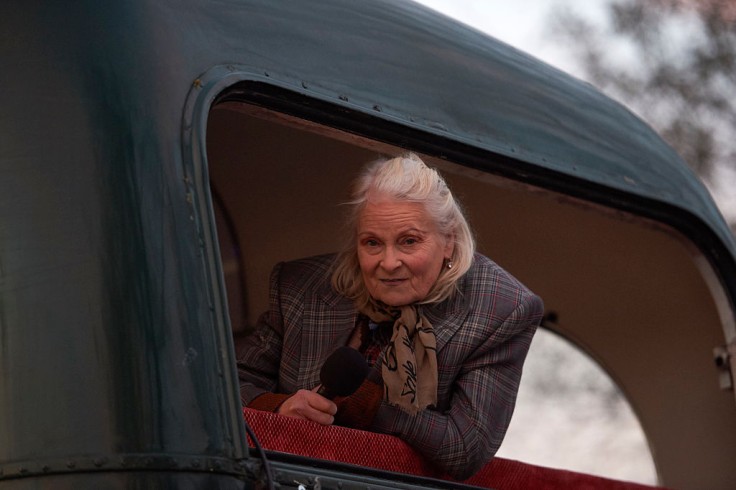
Vivienne Westwood died on Thursday at the age of 81. While she peacefully died, the impact of her death is quite tragic. Many said it was an end of an era.
Having dressed the Sex Pistols, she was synonymous with 1970's punk rock.
Vivien Westwood Cause of Death
Her unapologetic political stance made her one of the most recognizable names in British fashion. "Vivienne Westwood died today, peacefully and surrounded by her family, in Clapham, South London. The world needs people like Vivienne to make a change for the better," her fashion house said on Twitter.
Climate change, pollution, and her support for WikiLeaks founder, Julian Assange all inspired models to carry protest T-shirts and banners down the runway.
To protest fracking, she donned a Margaret Thatcher costume for a magazine cover in 1989 and drove a white tank near the country estate of future British leader, David Cameron.
In 1992, Queen Elizabeth inducted the rebel into the British establishment by awarding her the Order of the British Empire medal. However, in an effort to shock, Westwood arrived at Buckingham Palace sans undergarments, which she demonstrated to photographers by twirling her skirt.
"The only reason I am in fashion is to destroy the word 'conformity'," Westwood said in her 2014 biography. "Nothing is interesting to me unless it's got that element."
Westwood, whose orange or white hair made her instantly recognizable, made her name in punk fashion in 1970's London by dressing the pioneering punk rock band.
Defining Punk Rock Fashion
Together with the manager of the Sex Pistols, Malcolm McLaren, she defied the hippie trends of the time by selling clothing inspired by rock-and-roll. They progressed to torn outfits adorned with chains as well as latex and fetish pieces, which they sold at their store on London's King's Road, which was variously named "Let It Rock," "Sex," and "Seditionaries."
They utilized prints of swastikas, breasts without clothing, and, perhaps most notably, an image of the queen with a safety pin through her lips. Favorite items included sleeveless black T-shirts with studs, zips, safety pins, and chicken bones that had been bleached. "There was no punk before me and Malcolm," Westwood said in the biography. "And the other thing you should know about punk too: it was a total blast."
Born Vivienne Isabel Swire on April 8, 1941 in the town of Glossop in the English Midlands, Westwood grew up during rationing in the midst and after World War II. A recycling mentality permeated her work, and she advised fashionistas repeatedly to "select carefully" and "buy less." Beginning in the late 1960s, she lived in a small flat in south London and commuted to work by bicycle for roughly three decades.
Her parents, a greengrocer and a cotton weaver, relocated the family to north London when she was a teenager, where she studied jewelry-making and silversmithing before retraining as a teacher. She met her first husband, Derek Westwood, while she was teaching at a primary school, and she married him in a handmade dress. Ben was born in 1963, and the parents separated in 1966.
Westwood, a single mother at the time, was selling jewelry on London's Portobello Road when she met McLaren, an art student who would become her romantic and professional partner. Joe Corre, co-founder of the lingerie brand Agent Provocateur, was their son. After the breakup of the Sex Pistols, the two held their first catwalk show in 1981, showcasing a "new romantic" style consisting of African-inspired patterns, buccaneer trousers, and sashes.
In her forties, Westwood began to slowly forge her own fashion path, eventually separating from McLaren in the 1980s. Her influential designs have included corsets, Harris Tweed suits, and taffeta ballgowns. She frequently draws inspiration from the past. Her "Mini-Crini" collection debuted in 1985 with a shorter, puffier skirt and a more fitted silhouette. In 1993, when model Naomi Campbell stumbled down the catwalk in a pair, her sky-high platform shoes attracted worldwide attention.
© 2025 MusicTimes.com All rights reserved. Do not reproduce without permission.







